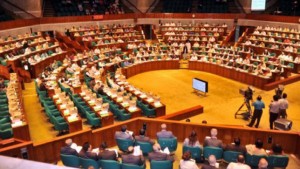by Frank Hoffer on 22nd January 2020
A serious discussion of ‘just transition’ must break with a social model based on individual utility maximisation—before it breaks the biosphere. The story goes like this. Brown jobs have to be replaced by green jobs. There will be victims of decarbonisation but for the greater good of saving the planet, this is inevitable. Greening the economy however also opens up opportunities and will generate alternative jobs and growth. Successful greening can position advanced industrialised European nations as green global champions and the green profits will allow societies to compensate the losers. The remaining challenge is the fair management of this fundamental structural change.
‘Just transition’ is then the magic formula to ensure that what is good for all is also good for everybody. It sounds a bit like the free-trade narrative of such social-democratic globalisers as Gerhard Schröder, Tony Blair and Bill Clinton.
What looks theoretically like a win-win solution often fails to materialise, however, because such processes are not driven by the common good but profit maximisation. And the enthusiasm of winners to pay taxes and to share with the losers is, according to all available evidence, rather limited.
The narrative of ‘green growth’ and just transition is basically a variation of the Keynesian compromise of market-driven innovation combined with social-democratic industrial restructuring. It assumes that through technological progress plus government policies the circle can be squared: energy- and resource-saving innovation allow simultaneously improved material wellbeing, reduced resource utilisation and lower CO2 emissions. We can enjoy continued growth in consumption—and still, save the planet.
Structural change
In the past, structural change was about replacing sunset industries with new growth opportunities. As long as productivity gains did not exceed growth, employment grew overall and just transition was about maintaining growth while helping people adapt to new labour market-requirements, promoting migration or paying social transfers to those unable to acquire the newly required skills.
Even under favourable conditions of economic growth, however, structural change has proved very challenging—as the US rustbelt, Nord-Pas-de-Calais in France, the English midlands or the German Ruhr show. Reskilling people is easier said than done, labour demand is more difficult to predict than usually thought and regional mobility is slow due to the economic, cultural and social transactional costs. Maintaining and enhancing growth alone is not sufficient for a just transition but it has been a cornerstone of successful management of structural change in the past.
Green growth adds an environmental dimension. Otherwise, it remains largely within the paradigm of expansionary capitalism. So far the most successful implementation of such a transformation strategy has been German reunification, the most radical—if partly unintended—the greening of one of the most polluting economies of the world.
Within six years the CO2 footprint per person in the former German Democratic Republic halved. Generous pre-retirement arrangements and public-employment schemes on an unprecedented scale, as well as the right of all east Germans to migrate to the prosperous west, helped to buffer the massive employment shock, as roughly half of all jobs disappeared in this restructuring tsunami. A total collapse in birth rate (during the first 15 years after unification the Vatican was the only state with a lower rate than the east German Länder) generated an environmentally-friendly, long-term demographic decline.
Thirty years and 2 trillion euro later we see economic growth and the blühende Landschaften (flourishing landscapes) promised by the unification chancellor, Helmut Kohl. Mecklenburg Vorpommern has replaced Bavaria as Germany’s most popular tourist destination, unemployment rates are single-digit, Leipzig is the fasted growing city in Germany and a small but highly efficient East-German manufacturing industry is fully integrated into the mighty German export engine. Berlin, the reborn capital, is by and large a green post-industrial city with clean air, superb public transport, countless theatres, thousands of business start-ups and vegan food at any corner. It attracts the young and creative from all corners of the world.
But there are a few important lessons to be learned. First, there will be no other place in the world where the relatively wealthy neighbours will be willing to compensate the victims of environmental restructuring to a similar scale.
Secondly, money transfer is not enough to neutralise the political fallout. Engineering change without the people and treating the losers largely as a transitional cost results in a considerable political backlash. Today, in the decarbonised East-German countryside 25-30 per cent vote for the extreme right-wing Alternative für Deutschland.
Finally, with rising living standards the decarbonisation of Germany has slowed down, as the overall economic logic of growth has been maintained. The environmental challenge, however, puts the very concept of growth into question.
No solution
If the global growth rate of roughly 3 per cent continues, world gross domestic product will double every 25 years. There is no way that this can be achieved without a massive increase in energy and resource consumption. Greening the economy is better than continuing business as usual, but having more less-polluting consumer goods is no solution and reaching the critical point of 2C global warming only in 2060 instead of already in 2050 looks more like a small delay.
Of course, more environmentally-friendly products, new mobility concepts, energy-neutral houses and so on are desirable and necessary. But there should be no illusion that a global economy based on permanent growth and powered by the pursuit of profit maximisation is environmentally sustainable. It is not.
While for thousands of years productivity growth was marginal and humankind lived in a poor circular economy, we changed gear approximately 200 years ago and global GDP started to rise exponentially. Today a society without growth seems beyond imagination, as growth is the panacea that makes injustice and inequality bearable and ensures general social peace in a deeply unfair world which nevertheless promises equal human rights.
Given the strong correlation between individual income and individual carbon footprint, 1 per cent growth for an upper-middle-class person in Europe is far more harmful than 100 per cent income growth for a very poor person in Africa. Average individual weekly CO2 emissions in the UK equal the average annual impact per citizen in the poorest African countries.
Hence, we need simultaneously income growth for the bottom half of the world population while establishing a circular economy for the affluent, with stagnating income and a declining carbon footprint. All possible technological progress, the greening of production and the reduction of CO2 emissions per unit of output will not solve the issue without a radically different attitude to growth, consumption and quality of life.
The affluent—the top 10 per cent of the population in most societies today receive 35-65 per cent of national income—are overconsuming and causing 50 per cent of all CO2 emissions. They set the aspiration for the rest of the world’s population. It is their lifestyle and consumption pattern that needs to change radically, while the bottom 50 per cent of the world population, as well as the bottom 30 per cent of the population in developed countries, definitely need income growth to move out of poverty.
More time
Convincing the affluent to consume wisely is most likely a Sisyphean task, as long as they are expected to give up something for nothing. The new currency for the rich has to be more time instead of more money. Anyone in the highest income decile should enjoy working-time reduction instead of any further income rise. Those still insisting on more money need to be taxed at a high marginal rate, of at least 80 per cent.
Bullshit production and consumption—private jets, luxury yachts, sport-utility vehicles, extravagant housing, frequent-flyer benefits, plastic bags, free returns of online purchases, coffee to go …—need to be stopped or highly taxed. Public investment in education, security, mobility, health and care needs to take precedent over costly private solutions for the rich, while subsidies need to be directed towards environmentally friendly industries and so on.
Notwithstanding all these urgently needed policy measures, however, any just transition beyond mere greening of ‘business as usual’ must have at its heart a transition from work to leisure, from material consumption to time enjoyment. Western lifestyle has elevated individual utility maximisation to the ultimate goal of life. Within this Weltanschauung, caring about the wellbeing of others—let alone future generations or the planet—is irrational. Our secular societies are in urgent need of a deeper sense of purpose. This is not a metaphysical add-on to a Green New Deal but at the core of sustainability.
It is just too depressing to imagine that the final destination of humankind is more cars, Ipads, ever faster fashion and a billion Facebook likes. The technocratic left currently lacks the anger, ambition, ideas and hope to offer an alternative. The early visionaries of socialism thought of technical progress as a way to liberate people from the burden of work. John Maynard Keynes foresaw his grandchildren working 15 hours a week. Already 150 years ago Paul Lafargue—concerned about the labour movement’s obsession with a right to work—promoted ‘the right to laziness’.
It is time to put these visions into practice. There is no just transition without greater distributional justice and without replacing money with time. Beyond a decent salary, the marginal utility of money is highly overrated—and what really counts in life money can’t buy.
(Frank Hoffer is executive director of Action, Collaboration, Transformation (ACT). He writes in a personal capacity.)




